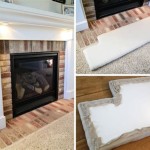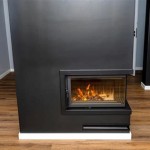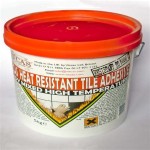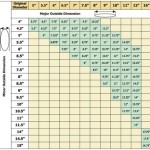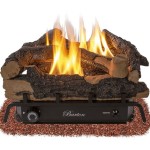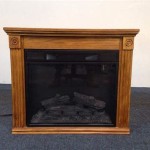Fireplace Mantel Repair: A Comprehensive Guide
A fireplace mantel serves as both a focal point and a functional shelf in a living space. Over time, however, mantels can become damaged due to various factors, including heat exposure, moisture, physical impacts, and the natural aging process of the materials used in their construction. Addressing these damages promptly and effectively is crucial not only for aesthetic appeal but also for ensuring the structural integrity and safety of the fireplace area. This article provides a detailed guide to understanding common fireplace mantel issues and outlines the necessary steps for their repair.
Identifying Common Mantel Problems
Before undertaking any repair work, a thorough inspection of the mantel is essential to accurately diagnose the problem. Common issues include cracks, chips, water damage, loose joints, discoloration, and structural instability. The type of material the mantel is made from – wood, stone, brick, or composite – will significantly influence the type of damage it sustains and the appropriate repair techniques. Understanding the nature of the damage is the first step towards a successful repair.
Wood mantels, being susceptible to moisture, are often prone to rot, warping, and insect infestation. Look for signs of discoloration, soft spots, or crumbling wood. Cracks in wood can occur due to changes in humidity and temperature. Stone and brick mantels, while more durable, can suffer from cracks, chips, and mortar deterioration. Water damage can lead to efflorescence (a white, powdery deposit on the surface) on these materials. Composite mantels, often made from manufactured materials, may exhibit cracking, peeling, or separation of layers.
Loose joints are a common problem in mantels that are assembled from multiple pieces. This can result in instability and an uneven appearance. Discoloration can be caused by soot, smoke, or general grime accumulation over time. A comprehensive assessment of the mantel will reveal the full extent of the damage and inform the repair strategy.
Essential Tools and Materials
The specific tools and materials required for fireplace mantel repair will depend on the type of mantel, the extent of the damage, and the chosen repair method. However, some basic items are generally necessary for most repair projects. Safety equipment is paramount; this includes safety glasses, gloves, and a dust mask or respirator, especially when working with materials that generate dust or fumes.
For wood mantels, essential tools include: a wood scraper, sandpaper (various grits), wood filler or epoxy, wood glue, clamps, a hammer, a chisel, a drill with various bits, and paint or stain to match the existing finish. A moisture meter can be helpful in assessing the moisture content of the wood, particularly if rot is suspected. A utility knife or razor blade can be used for precise trimming and cleaning.
For stone and brick mantels, essential tools include: a chisel and hammer, a wire brush, a pointing trowel, mortar mix (matching the existing mortar), masonry sealant, and a sponge. A grinder with a diamond blade can be used for cutting or shaping stone or brick. A bucket and mixing trowel are required for preparing the mortar. A level is essential to ensure the mortar joints are straight.
For all mantel types, general supplies such as cleaning solutions, cloths, and brushes are needed to prepare the surface before and after repairs. A ladder or scaffolding may be necessary to reach higher areas of the mantel. Having the right tools and materials on hand will streamline the repair process and ensure a professional-looking result.
Step-by-Step Repair Techniques
Once the problem has been identified and the necessary tools and materials gathered, the repair process can begin. The following sections outline specific repair techniques for various types of mantel damage.
Repairing Cracks in Wood Mantels: Begin by cleaning the area around the crack with a brush or vacuum. Remove any loose debris. If the crack is small, apply wood filler or epoxy, pressing it firmly into the crack. Allow the filler to dry completely according to the manufacturer's instructions. Once dry, sand the area smooth with progressively finer grits of sandpaper. For larger cracks, it may be necessary to widen the crack slightly to allow for better adhesion of the filler. In some cases, reinforcing the crack with small wooden dowels may be required. Apply wood glue to the dowels and insert them into pre-drilled holes across the crack. After the filler is dry and the area is sanded smooth, apply paint or stain to match the existing finish. Multiple coats may be required to achieve a seamless blend.
Addressing Water Damage in Wood Mantels: Water damage can lead to rot, which weakens the wood. If rot is present, carefully remove the affected wood with a chisel or scraper. Treat the remaining wood with a wood preservative to prevent further decay. Fill the void with wood filler or epoxy, allowing it to dry completely. Sand the area smooth and apply a primer before painting or staining. If the water damage is extensive, it may be necessary to replace the damaged section of the mantel entirely. Ensure the new wood is properly sealed and treated to prevent future water damage. Identifying and addressing the source of the water leak is crucial to prevent recurrence.
Repairing Chips and Cracks in Stone or Brick Mantels: Clean the damaged area thoroughly with a wire brush to remove loose particles and debris. Mix a small batch of mortar that closely matches the existing mortar in color and texture. Dampen the area to be repaired with water to improve adhesion of the mortar. Apply the mortar to the chip or crack with a pointing trowel, pressing it firmly into place. Overfill the area slightly to allow for shrinkage. Once the mortar has partially set, use a damp sponge to smooth the surface and blend it with the surrounding area. Allow the mortar to cure completely according to the manufacturer's instructions. For larger repairs, multiple layers of mortar may be required. Applying a masonry sealant can help protect the repaired area from future water damage.
Fixing Loose Joints in Mantels: Loose joints can be caused by weakening of the glue or mortar over time. For wood mantels, carefully separate the joint and clean away any old glue or debris. Apply fresh wood glue to both surfaces and clamp the joint together until the glue is completely dry. For stone or brick mantels, remove the loose mortar and clean the joint thoroughly. Apply fresh mortar to the joint and allow it to cure completely. In some cases, it may be necessary to reinforce the joint with screws or dowels. Countersink the screws and cover them with wood filler or mortar to conceal them. Ensuring the joint is properly aligned and secured is essential for the stability of the mantel.
Cleaning and Maintaining Mantels: Regular cleaning and maintenance can help prevent future damage and extend the lifespan of the mantel. For wood mantels, dust regularly with a soft cloth. Avoid using harsh chemicals or abrasive cleaners, as they can damage the finish. Apply a furniture polish or wood cleaner specifically designed for wood surfaces. For stone and brick mantels, clean with a mild soap and water solution. Avoid using acidic cleaners, as they can damage the stone or brick. Inspect the mantel regularly for signs of damage and address any issues promptly. Applying a protective sealant can help prevent water damage and staining. Keeping the area around the fireplace clean and free of debris can also help prevent damage to the mantel.
Safety Considerations During Repair: Safety should be a top priority during any fireplace mantel repair project. Always wear safety glasses to protect your eyes from dust and debris. Wear gloves to protect your hands from chemicals and sharp objects. Use a dust mask or respirator when working with materials that generate dust or fumes, such as sanding wood or mixing mortar. Ensure the work area is well-ventilated. When using power tools, follow the manufacturer's instructions carefully and wear appropriate safety gear. If working at heights, use a sturdy ladder or scaffolding and take precautions to prevent falls. If you are unsure about any aspect of the repair process, consult a professional contractor.
Selecting Appropriate Repair Materials: Choosing the right repair materials is crucial for a successful and long-lasting repair. For wood mantels, select wood filler or epoxy that is compatible with the type of wood and the existing finish. Use wood glue that is specifically designed for woodworking and provides a strong bond. When matching paint or stain, take a sample of the existing finish to a paint store for accurate color matching. For stone and brick mantels, select mortar that closely matches the existing mortar in color and texture. Use a masonry sealant that is compatible with the type of stone or brick. Avoid using materials that are incompatible with the existing mantel, as this can lead to further damage. Consult with a professional at a hardware store to ensure you are selecting the appropriate materials for your specific repair project.
Dealing with Complex Repairs: Some fireplace mantel repairs may be beyond the skill level of the average homeowner. If the damage is extensive, the mantel is structurally unstable, or you are uncomfortable performing the repairs yourself, it is best to consult a professional contractor. A contractor has the expertise and equipment to handle complex repairs safely and effectively. They can also identify underlying issues that may be contributing to the damage. Attempting to repair a mantel without the necessary skills and knowledge can result in further damage and potentially create a safety hazard. It is always better to err on the side of caution and seek professional assistance when needed. Obtaining multiple quotes from different contractors can help you find the best value for your repair project.
Enhancing Mantel Appearance After Repair
Once the structural repairs are complete, attention can be turned to enhancing the aesthetic appeal of the mantel. This may involve cleaning, painting, staining, or applying decorative finishes. Select finishes that are appropriate for the type of mantel and complement the overall style of the room. Consider applying a protective sealant to help prevent future damage. Adding decorative elements, such as artwork, candles, or plants, can further enhance the appearance of the mantel and create a focal point in the room. Ensure that any decorative items are placed safely and do not obstruct the fireplace opening. Regular maintenance and cleaning will help keep the mantel looking its best for years to come.

Fireplace Repair And Rebuilding Antrim S A Good Sweep Chimney Masonry Service

How To Re A Fireplace Mantel True Value

How Can I Repair A Concrete Ledge On Fireplace Paint Hometalk

Fireplace Repair And Installation In Boston Ma

10 Beautiful Fireplace Restoration Ideas To Consider Remodeling

Fireplace Mantel Repair Seattle

Gas Fireplace Service Repair Frederick Md Installation

Repairing And Restoring Marble Fireplaces Www Stone Repairs Com

Fireplace S Causes And How To Deal With Them

Fireplace Repair Installation Company In Dearborn Mi
Related Posts

